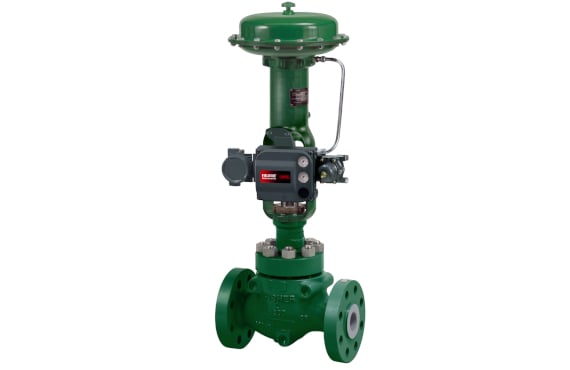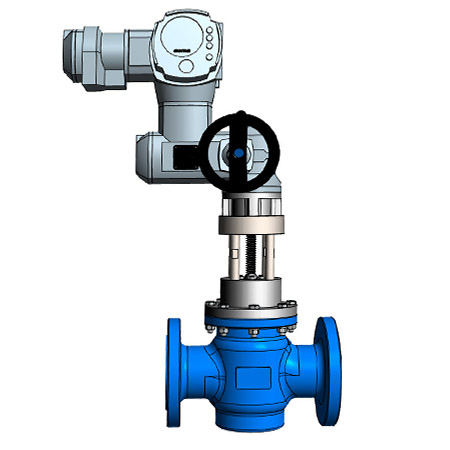How Control Valves Effect Energy Efficiency in Industrial Settings
How Control Valves Effect Energy Efficiency in Industrial Settings
Blog Article
Achieve Seamless Integration and Control With High Quality Building Automation Controls
In the realm of contemporary structure management, the importance of quality building automation controls can not be overemphasized. Embracing top quality structure automation controls is not just a matter of ease yet a tactical critical for companies intending to maximize their facilities' efficiency and sustainability.

Advancement of Building Automation Controls
Throughout the past couple of decades, the development of building automation controls has actually significantly changed the means buildings are handled and operated. Originally, developing automation systems largely concentrated on basic functions such as regulating air, heating, and air flow conditioning (COOLING AND HEATING) systems. Nonetheless, as modern technology advanced, these controls have actually come to be more innovative, permitting a broader series of building systems to be incorporated and handled centrally.
The evolution of developing automation controls has actually seen a shift in the direction of more smart systems that can adapt to altering problems in real-time. This adaptability is critical for maximizing energy efficiency and ensuring owner comfort. Furthermore, modern-day structure automation controls now provide functions such as anticipating upkeep, remote tracking, and data analytics, making it possible for center managers to make data-driven decisions to boost structure performance.

Advantages of High Quality Combination
The improvement in building automation regulates in the direction of more intelligent systems has actually emphasized the substantial advantages of top quality integration in optimizing building procedures and boosting overall effectiveness. Quality integration of constructing automation controls offers several crucial advantages. Firstly, it leads to improved energy effectiveness by allowing various systems to interact effortlessly, ensuring ideal efficiency and minimizing energy waste. Quality assimilation enhances resident convenience and productivity by allowing individualized control over environmental setups like air, temperature, and illumination high quality. This customization can result in an extra conducive and comfortable working or living setting. Additionally, high quality combination simplifies maintenance and repairing procedures, as all systems are interconnected and can be kept an eye on and controlled from a central interface. This centralized control likewise provides better presence and insights into building performance, making it possible for proactive maintenance and optimization strategies. In general, the advantages of top quality integration in structure automation controls are find undeniable, using raised efficiency, convenience, and operational performance.
Improved Customer Experience and Availability
Enhancing user communication with building automation controls via intuitive layout and boosted access elevates the overall experience for occupants and facility managers alike. By concentrating on individual experience, building automation systems can become extra straightforward and reliable. User-friendly interfaces, clear navigation, and adjustable settings encourage users to communicate with the controls quickly and effectively.
Access functions play an important function in making sure that all people, consisting of those with specials needs, can use the structure automation manages with simplicity. Including attributes such as voice commands, responsive buttons, and color-contrasted displays can enhance access and make the controls much more comprehensive.
In addition, enhanced user experience results in greater user complete satisfaction, boosted productivity, and much better decision-making. Occupants can change ecological settings according to their preferences, while facility supervisors can efficiently check and manage structure systems - control valves. Generally, prioritizing user experience and access in building automation manages adds to a more efficient and seamless building environment for all stakeholders additional info entailed
Lasting Practices Through Automation

Moreover, automation can promote the assimilation of renewable energy resources such as solar panels or wind generators right into structure procedures. Through automation, structures can straighten with modern-day sustainability goals and contribute to a greener future.
Future Trends in Building Control Solution
One noticeable pattern forming the future of structure control systems is the raised assimilation of Artificial Knowledge (AI) and equipment knowing. Additionally, the Internet of Points (IoT) is reinventing building control systems by connecting devices and sensing units to improve procedures and enhance efficiency.
One more key trend is the focus on cybersecurity steps to safeguard against prospective dangers to building automation systems. As structures become more interconnected, ensuring robust cybersecurity protocols will be important to safeguard sensitive information and stop unapproved gain access to.
Furthermore, the change towards cloud-based systems is acquiring momentum, permitting centralized control and remote access to structure systems. This promotes much easier tracking, maintenance, and updates, boosting the total performance and adaptability of structure control systems. As technology continues to development, these trends are anticipated to form the future landscape of structure automation controls, driving advancement and sustainability in the built atmosphere.
Verdict
Future trends in building control systems are likely to concentrate on further boosting automation abilities for enhanced power efficiency and general performance. It is essential for building proprietors and operators to prioritize the fostering of top quality building automation manages to enhance structure operations and achieve long-lasting sustainability objectives.
In the realm of contemporary building management, the value of quality building automation controls can not be overstated. On the whole, the evolution of building automation manages proceeds to drive innovation in the structure monitoring market, providing new opportunities for developing smarter and more sustainable structures.
The development in structure automation regulates towards more intelligent systems has emphasized the substantial benefits of top quality integration in maximizing building operations and enhancing overall performance. In general, prioritizing customer experience and accessibility in building automation controls adds to an extra effective and smooth building setting for all stakeholders included.
It is essential for structure Extra resources owners and drivers to prioritize the fostering of top quality building automation regulates to optimize building procedures and attain lasting sustainability objectives. - control valves
Report this page